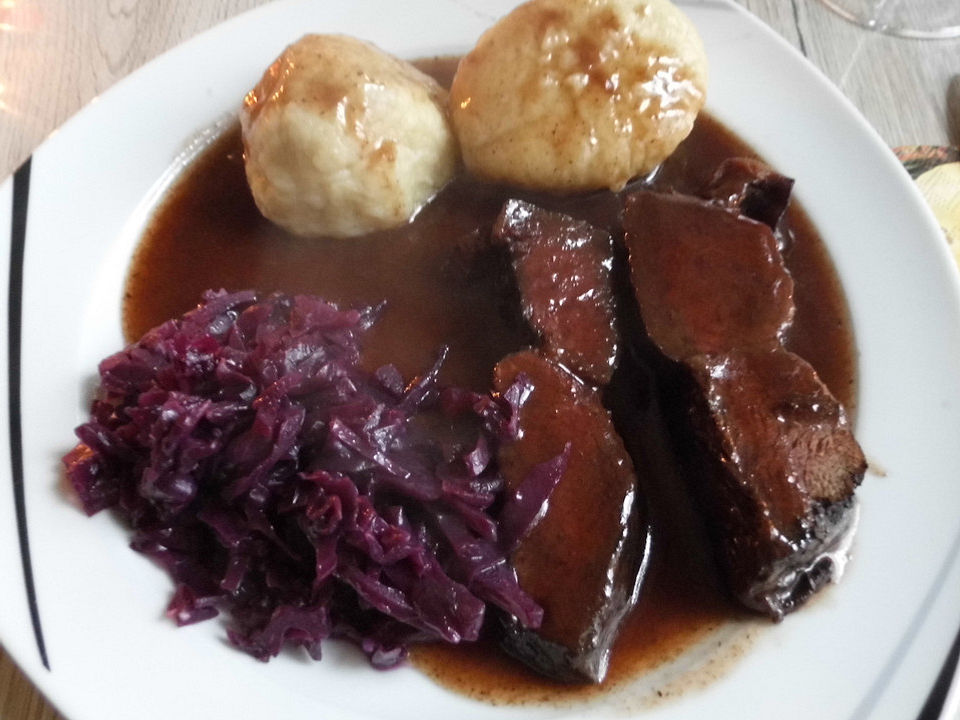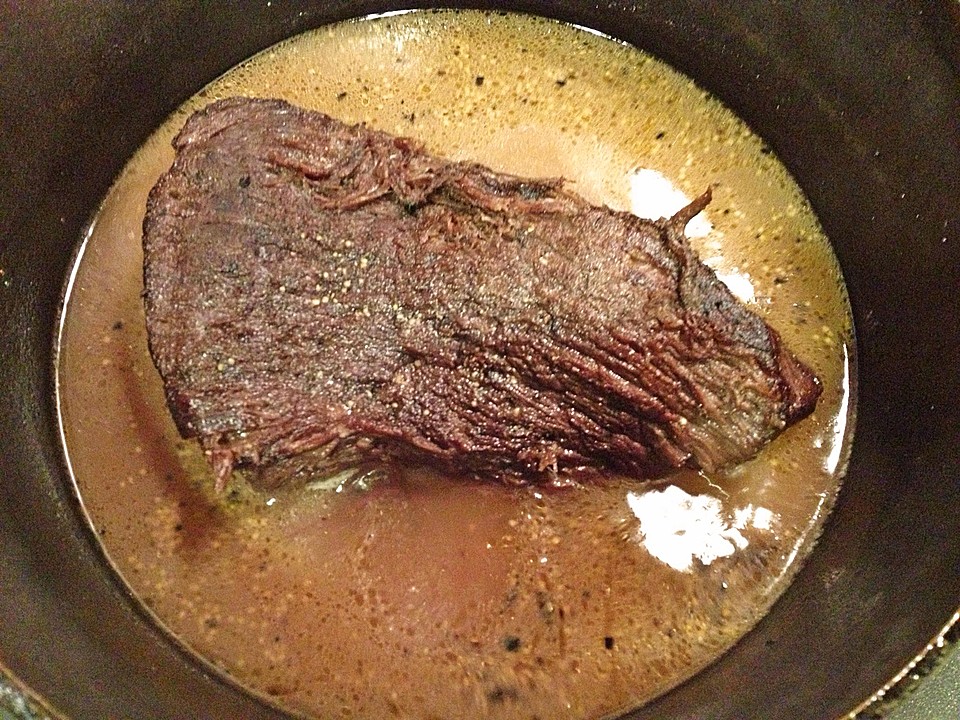

Red wine vinegar and wine typically form the basis of the marinade, which also includes earthy aromatic spices such as peppercorns, juniper berries, cloves, nutmeg, and bay leaves and less commonly coriander, mustard seed, cinnamon, mace, ginger, and thyme. Marinating the roast Ī solid cut from the bottom round or rump is marinated for three or four days, or as many as ten, before cooking. Venison or other game is often prepared as sauerbraten as the spices and vinegar take away the gamey taste of the meat. Tougher, less expensive cuts of meat are used-typically a rump roast or bottom round of beef. Sauerbraten can be made with many different kinds of roasting meat. Raisins and sometimes sugar beet syrup are added in cooking to provide sweetness to complement the sourness of the marinade. Rheinischer Sauerbraten is prepared in Germany's Rhineland region-along the valley of the Rhine.In many regions, wine and vinegar are used together. Recipes from eastern regions of Germany closer to Poland and the Czech Republic tend to use vinegar as the base more frequently. Wine vinegar, apple cider vinegar and other varieties can be used as a base. While Germany largely produces white wines such as Riesling and Gewürztraminer, regions of Germany that are closer to France often use red wine as the base for the marinade. Generally, the marinade's base is either red wine, vinegar, or a combination of both. Many of the variations are in the ingredients used for the marinade in which the cut of meat is immersed for several days before cooking. There are many regional variants of sauerbraten. Rheinischer Sauerbraten, in which raisins are added to provide a sweet balance to the sourness and acidity of the marinade

Most other areas in which the dish is found currently use beef. Horse meat was not originally used for the dish, although it has become commonly used in restaurants in the Rhineland. Saint Albertus Magnus, also known as Saint Albert the Great and Albert of Cologne, is also credited with popularizing the dish in the 13th century. Several sources believe sauerbraten was invented by Charlemagne in the 9th century AD as a means of using leftover roasted meat. While quite common, these claims are largely unsubstantiated. According to this legend (Julius Caesar was murdered in 44 BC and the Roman city of Cologne was founded in 50 AD), this inspired the residents of Cologne to imitate the Roman import. Julius Caesar has been assigned a role in the inspiration for sauerbraten as he sent amphoras filled with beef marinated in wine over the Alps to the newly founded Roman colony of Cologne. The word derives from Sauer meaning "sour" or "pickled" and Braten meaning "roast meat". The name "Sauerbraten" is of German origin and means "sour roast". Regional variants of the dish include those from Baden, Franconia, Thuringia, Rhineland, Saarland, Silesia, and Swabia. Ingredients used in the marinade, and accompaniments served with sauerbraten, vary across regions. A Sauerbraten dinner is almost always accompanied by a hearty gravy resulting from its roasting and is most often served with potato pancakes ( Kartoffelpuffer), potato dumplings ( Kartoffelklöße), or Spätzle. Usually, tougher cuts of meat, such as rump roast or bottom round of beef, are used, and the long marinating tenderizes the meat. Before cooking, the raw meat is marinated for three to ten days in a mixture of vinegar or wine, water, herbs, spices, and seasonings. It can be prepared from a variety of meats, most often from beef, but also from venison, lamb and mutton, pork and horse. It is regarded as a national dish of Germany, and is frequently served in German-style restaurants internationally.

Add gravy flavoring and salt and white pepper. Slowly add the strained marinade stirring constantly until sauce has thickened. Whisk until it comes together and bubbles. Add the butter to the pan over low heat and when melted add the flour.Remove the meat from the pan, let rest for 10 to 15 minutes then slice.After browning, deglaze pan with red wine and add marinade and beef shoulder. In large saute pan, add chopped onion to the olive oil and brown meat on all sides.Take meat out of marinade, and pat the meat dry with a towel.Add meat and buttermilk and refrigerate for 4 days. Place the vinegar, water, bay leaves, cloves, celery, carrots, quartered onion, salt and pepper in large container (earthenware, glass, plastic, or enamel).


 0 kommentar(er)
0 kommentar(er)
